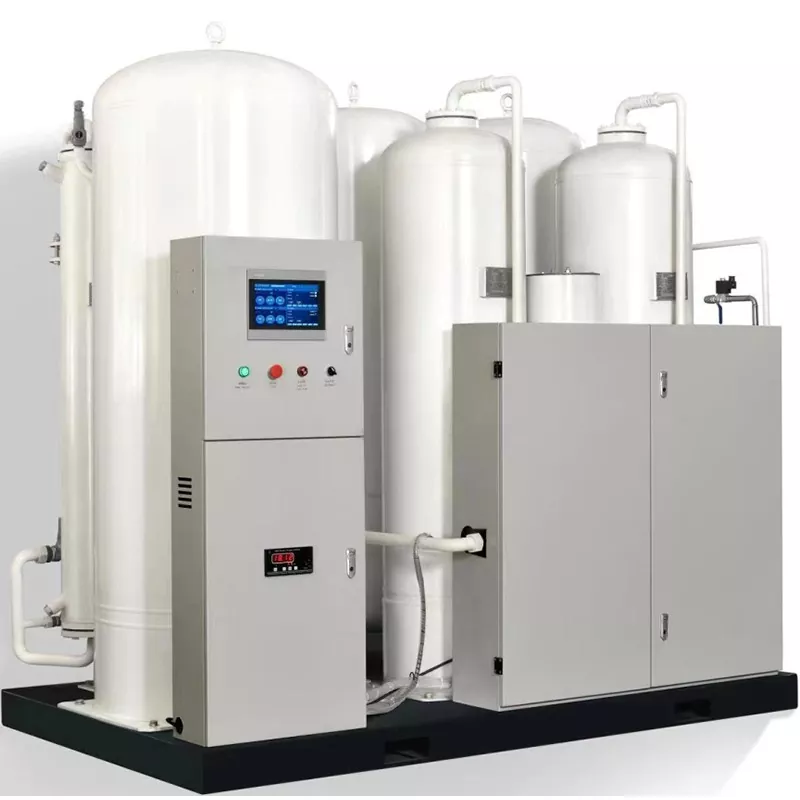
- English
- Español
- Português
- русский
- Français
- 日本語
- Deutsch
- tiếng Việt
- Italiano
- Nederlands
- ภาษาไทย
- Polski
- 한국어
- Svenska
- magyar
- Malay
- বাংলা ভাষার
- Dansk
- Suomi
- हिन्दी
- Pilipino
- Türkçe
- Gaeilge
- العربية
- Indonesia
- Norsk
- تمل
- český
- ελληνικά
- український
- Javanese
- فارسی
- தமிழ்
- తెలుగు
- नेपाली
- Burmese
- български
- ລາວ
- Latine
- Қазақша
- Euskal
- Azərbaycan
- Slovenský jazyk
- Македонски
- Lietuvos
- Eesti Keel
- Română
- Slovenski
- मराठी
- Srpski језик
- 简体中文
How can medical gas filling stations prevent gas leaks?
2025-11-13
Medical gas filling stations in hospitals store life-saving or therapeutic gases like oxygen and nitrogen. A leak could range from affecting treatment to potentially causing an explosion – the consequences are unimaginable. Therefore, leak prevention is absolutely paramount for filling stations. However, this isn't without solutions. By addressing every aspect from equipment design to daily operation, potential leaks can be nipped in the bud. Let's discuss this step by step.

Strengthening the Sealing Ring
The most common leak point in medical gas filling stations is the connection between the gas cylinder and the filling port, much like a broken sealing ring on a pressure cooker leaks gas. Therefore, medical-grade seals are used, not ordinary rubber rings. These are pressure-resistant and anti-aging, ensuring a firm grip even with repeated cylinder insertions and removals. Even more thoughtful is the double-sealing design. Besides the main sealing ring, there's a backup seal. Even if the main ring has a minor problem, the backup can immediately fill the gap. With two safeguards in place, leaks at the joints are extremely difficult to detect.
24-Hour Alarm
Sealing alone isn't enough; you need "eyes" to detect leaks promptly. Modern Medical Gas Filling Stations are equipped with high-precision gas detection systems, acting like "electronic sentinels" in every corner. These sensors can accurately detect minute changes in gas concentration in the air—for example, if the oxygen concentration slightly exceeds the safe level, the alarm in the control room will beep, and the leak location will be directly marked on the screen, even indicating which pipe and which joint is faulty. It's far more sensitive than manual inspection; even the most hidden leaks won't escape its "sniff."
Pressure-Resistant and Corrosion-Resistant Pipelines
The pipes in Medical Gas Filling Stations are like the "blood vessels" for gas transport. If a pipe cracks, the leak will be much more severe. Therefore, these pipes are all "custom-made with special materials"—using 316L medical-grade stainless steel, which has extremely strong corrosion resistance and will not rust or peel even when transporting gases with a certain level of humidity for extended periods. Furthermore, they undergo high-pressure testing before installation, filling the pipes with gas far exceeding normal operating pressure and maintaining that pressure for several hours without change to be considered合格 (qualified). It's like giving the pipes a "pressure resistance check," so you don't need to worry about them "bursting" or leaking during normal use.
Proper Operation
Even the best equipment can malfunction if operated improperly. Leak prevention at Medical Gas Filling Stations still relies on proper human oversight. Reputable hospital filling stations have a set of strict rules: before filling, the gas cylinder interface must be checked for wear and the sealing ring must be intact; during filling, the pressure must be increased slowly, and the valve must not be opened abruptly; after filling, the interface must be wiped with soapy water to check for bubbles—this is the most basic but effective method; bubbles indicate a leak, which must be fixed before handing it over to medical staff. Every step of the operation is recorded, with responsibility assigned to specific individuals for operation and inspection, leaving no room for carelessness.


